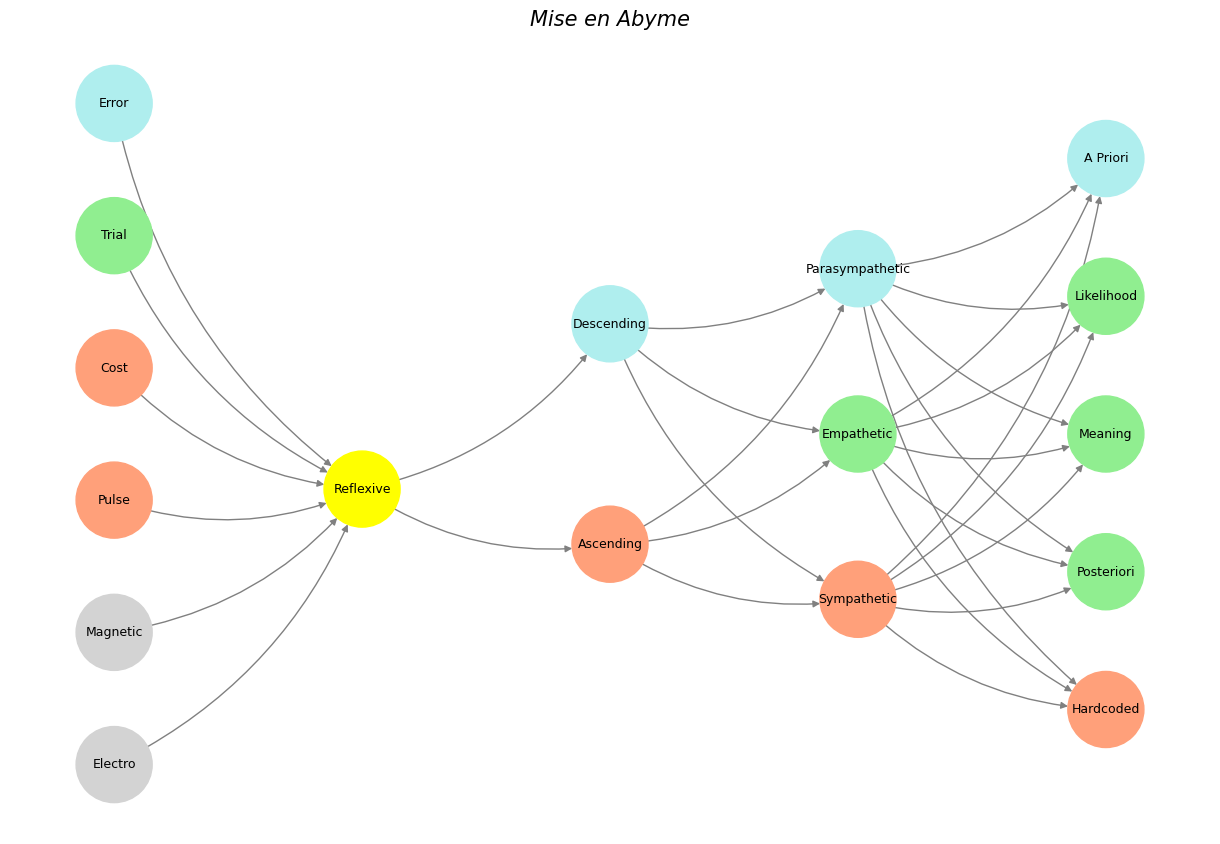Duality#
Musical Trials and Errors#
Throughout history, human civilizations have engaged in an intricate dance between nature’s immutable laws and the interventions required to shape the world to their desires. Nowhere is this more evident than in the domain of music, where cultures across time and geography have confronted a fundamental problem: how to organize sound in a way that is both harmonious and practically viable for human expression. The Western case study of equal temperament, as you have outlined, is a perfect encapsulation of this trial-and-error process—one in which a solution was devised, but at a cost, and that cost was nature’s harmonic series. Yet, this struggle to impose structure onto sound is not exclusive to Europe; it appears in different forms across cultures, each with its own balance of compromise and innovation, each with its own confrontation between the constraints of nature and the aspirations of human ingenuity.
The European tradition, which culminated in equal temperament, was a response to a dilemma that emerged with polyphony and harmonic modulation. The harmonic series—the natural order of overtones—does not conform neatly to the mathematical divisions of the octave that allow for seamless key changes. The trial, as you put it, was equal temperament: dividing the octave into twelve logarithmically equal parts so that musicians could modulate freely between keys. The error, the unintended consequence, was the emergence of a transformed harmonic landscape, one in which pure intervals were sacrificed for consistency across all keys. The cost was the natural tuning found in the harmonic series; the benefit was the creation of a system that allowed for the full realization of tonal music, particularly in the Baroque and Classical eras. This choice—altering nature’s mathematical purity for the sake of human expression—mirrors broader cultural and technological shifts, where efficiency and flexibility often displace organic, unmediated structures.
Contrast this with ancient Greece, where music was governed by a philosophy of natural resonance. The Greeks adhered to Pythagorean tuning, which prioritized pure mathematical ratios derived from the harmonic series, specifically the perfect fifth (3:2) and the perfect fourth (4:3). This tuning was deeply connected to their cosmology, in which music was an earthly manifestation of celestial order, a concept Plato referred to as the music of the spheres. However, Pythagorean tuning suffered from its own “error”—a cycle of pure fifths does not close neatly into an octave, leading to what is known as the Pythagorean comma, a small discrepancy that accumulates and renders perfect modulation impossible. Greek musicians resolved this not by forcing a compromise like equal temperament but by accepting the limitations: they structured their music within the confines of tetrachords and modes, each with its own distinct character, rather than attempting to modulate freely as later European musicians would.

Fig. 12 Mise en Abyme. This is a technique of placing a copy of an image within itself, or a story within a story. It can be found in many different media, including art, film, and literature. The term comes from heraldry and literally means “placed into abyss”.#
In the Middle East, a different approach emerged, one that did not seek uniformity but rather embraced microtonality. The Arabic maqam system and the Persian dastgah system divide the octave into more than twelve pitches, often including quarter tones. These tunings, unlike equal temperament, preserve the nuances of natural overtones, allowing for microtonal inflections that add expressive depth to the music. The cost of this system was that instruments could not easily modulate between distant keys, but the benefit was an extraordinary richness of tonal color. This is a prime example of a civilization opting for a path that aligns with nature rather than one that bends nature to human convenience.
In South Asia, Indian classical music developed an entirely different strategy. The raga system is not based on fixed tuning but on fluid intonation, where pitch is continuously adjusted depending on the musical context. The tuning system in Indian music is largely just intonation, meaning that intervals are based on the harmonic series rather than equal temperament. This allows Indian musicians to create subtle pitch inflections—known as sruti—that give each raga its distinctive emotional and spiritual effect. Unlike Europe, where the goal was to standardize tuning to facilitate harmonic progression, Indian music prioritizes melodic purity and the resonance of individual notes. The cost, if one can call it that, is that this system does not accommodate complex harmonic structures as seen in Western classical music. But the reward is a deeply expressive and spiritually resonant musical tradition that remains largely untainted by the compromises of equal temperament.
China presents yet another fascinating case, with its ancient lüshi system, which divided the octave into twelve pitches in a manner similar to the Pythagorean system. However, traditional Chinese music did not develop polyphony or harmonic modulation in the Western sense, meaning there was no need to adopt equal temperament. Instead, Chinese music focused on pentatonic and heptatonic scales, with tuning systems that varied depending on the specific musical tradition. The guqin, one of the most revered Chinese instruments, uses just intonation, preserving the natural purity of its intervals. In contrast, when Western equal temperament was introduced into China in the 20th century, it led to a profound shift in Chinese musical practice, as traditional instruments were either retuned or marginalized in favor of Western ones.
The 20th century saw an explosion of technological interventions in music, further distancing it from the natural harmonic series. The development of electronic instruments and synthesizers allowed musicians to generate sounds that had never before existed in nature. The invention of the 808 drum machine, for example, was not merely a new instrument but an entirely new way of thinking about rhythm, pulse, and the sonic experience. These machines generate percussive sounds using analog circuitry, bypassing traditional acoustics entirely. The human heartbeat, once the natural anchor of musical rhythm, has now been superseded by the mechanical precision of digital drum machines and sequencers. The cost of this transformation is the loss of the organic variations that define live performance; the benefit is the creation of new sonic landscapes unbound by physical constraints.
Today, the digital revolution has pushed music even further into abstraction. Auto-tuning software, granular synthesis, and AI-generated compositions have moved music beyond the limitations of human physicality. The harmonic series, which once dictated the structure of music, is now merely one option among many in an infinitely malleable sonic universe. The trial-and-error cycle has reached a new phase: we are no longer simply adjusting tuning systems to fit human needs; we are now redefining the very nature of what sound and music can be. The cost is a growing disconnect between music and its natural origins; the reward is a limitless field of creative possibilities.
What emerges from this global perspective is the realization that every culture has engaged in this dance between nature’s given structures and human intervention. Some, like the Indian and Middle Eastern traditions, have chosen to preserve natural tunings at the expense of harmonic flexibility. Others, like Europe, have sacrificed natural resonance to achieve modularity. Still others, like China, have adapted their traditions in response to outside influences. And now, in the age of digital music, we are on the precipice of a world where nature’s harmonic laws are no longer a governing force at all, but rather an aesthetic choice among many.
This journey—from the harmonic series to equal temperament, from Pythagorean tuning to maqams, from raga to digital synthesis—is a microcosm of humanity’s broader relationship with nature. We begin in awe of its structures, we seek to manipulate them to serve our needs, and in doing so, we often lose something irreplaceable. The question that remains is whether, in our relentless pursuit of musical innovation, we will eventually find our way back to the wisdom embedded in those ancient, untempered sounds of the universe.
Show code cell source
import numpy as np
import matplotlib.pyplot as plt
import networkx as nx
# Define the neural network fractal
def define_layers():
return {
'World': ['Electro', 'Magnetic', 'Pulse', 'Cost', 'Trial', 'Error', ], # Veni; 95/5
'Mode': ['Reflexive'], # Vidi; 80/20
'Agent': ['Ascending', 'Descending'], # Vici; Veni; 51/49
'Space': ['Sympathetic', 'Empathetic', 'Parasympathetic'], # Vidi; 20/80
'Time': ['Hardcoded', 'Posteriori', 'Meaning', 'Likelihood', 'A Priori'] # Vici; 5/95
}
# Assign colors to nodes
def assign_colors():
color_map = {
'yellow': ['Reflexive'],
'paleturquoise': ['Error', 'Descending', 'Parasympathetic', 'A Priori'],
'lightgreen': ['Trial', 'Empathetic', 'Likelihood', 'Meaning', 'Posteriori'],
'lightsalmon': [
'Pulse', 'Cost', 'Ascending',
'Sympathetic', 'Hardcoded'
],
}
return {node: color for color, nodes in color_map.items() for node in nodes}
# Calculate positions for nodes
def calculate_positions(layer, x_offset):
y_positions = np.linspace(-len(layer) / 2, len(layer) / 2, len(layer))
return [(x_offset, y) for y in y_positions]
# Create and visualize the neural network graph
def visualize_nn():
layers = define_layers()
colors = assign_colors()
G = nx.DiGraph()
pos = {}
node_colors = []
# Add nodes and assign positions
for i, (layer_name, nodes) in enumerate(layers.items()):
positions = calculate_positions(nodes, x_offset=i * 2)
for node, position in zip(nodes, positions):
G.add_node(node, layer=layer_name)
pos[node] = position
node_colors.append(colors.get(node, 'lightgray'))
# Add edges (automated for consecutive layers)
layer_names = list(layers.keys())
for i in range(len(layer_names) - 1):
source_layer, target_layer = layer_names[i], layer_names[i + 1]
for source in layers[source_layer]:
for target in layers[target_layer]:
G.add_edge(source, target)
# Draw the graph
plt.figure(figsize=(12, 8))
nx.draw(
G, pos, with_labels=True, node_color=node_colors, edge_color='gray',
node_size=3000, font_size=9, connectionstyle="arc3,rad=0.2"
)
plt.title("Mise en Abyme", fontsize=15, fontstyle='italic')
plt.show()
# Run the visualization
visualize_nn()


Fig. 13 Tryptophan, Tryptamine, and Y’all Who Be Trippin’. Information in nature is encoded in gravity and photons and zapped from the cosmos, to earth, to life, to silicon. As for the point of view, thats open for discourse. Source: Lorenzo Expeditions. And if we invert all the aforementioned, then we might say something like: The code provides a unique blend of art and science, creating a visual narrative that might engage viewers in thinking about the structure of thought, decision-making, or the whimsical nature of reality as depicted in “Alice’s Adventures in Wonderland” - Grok-2.#

